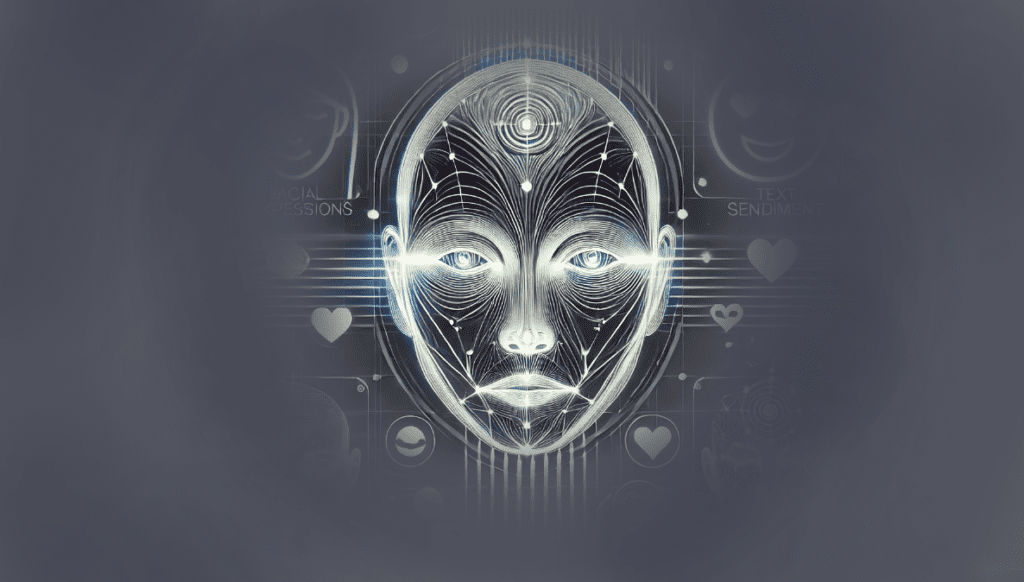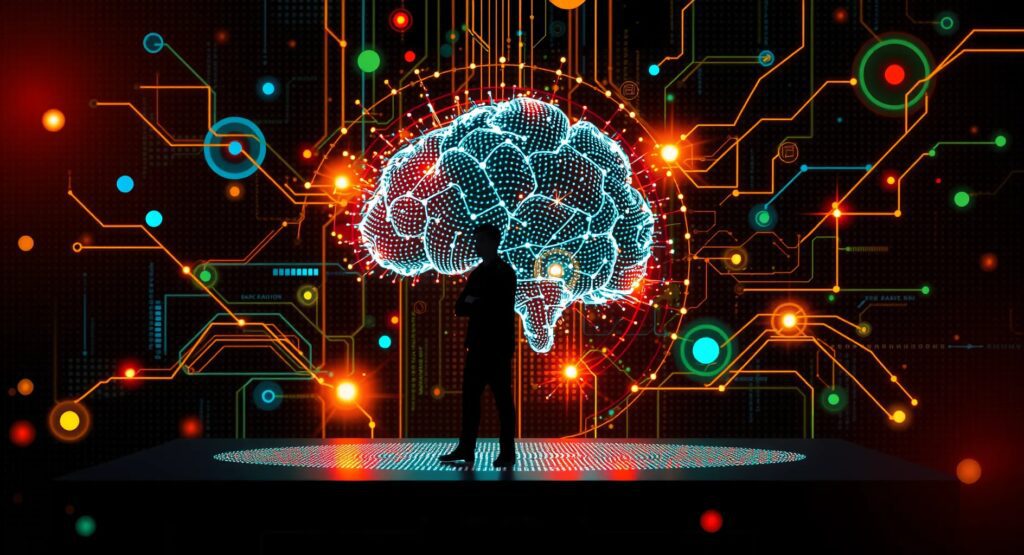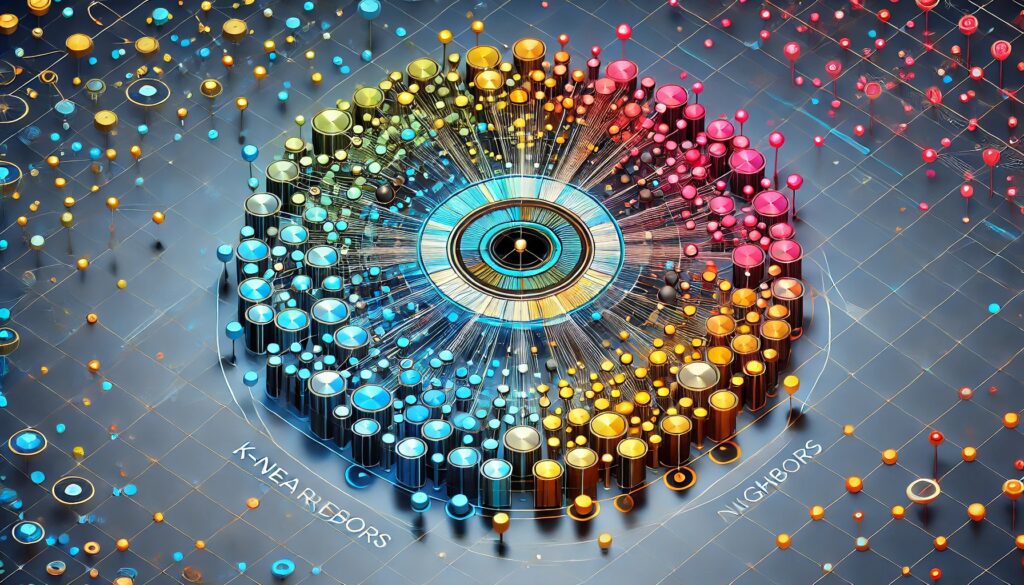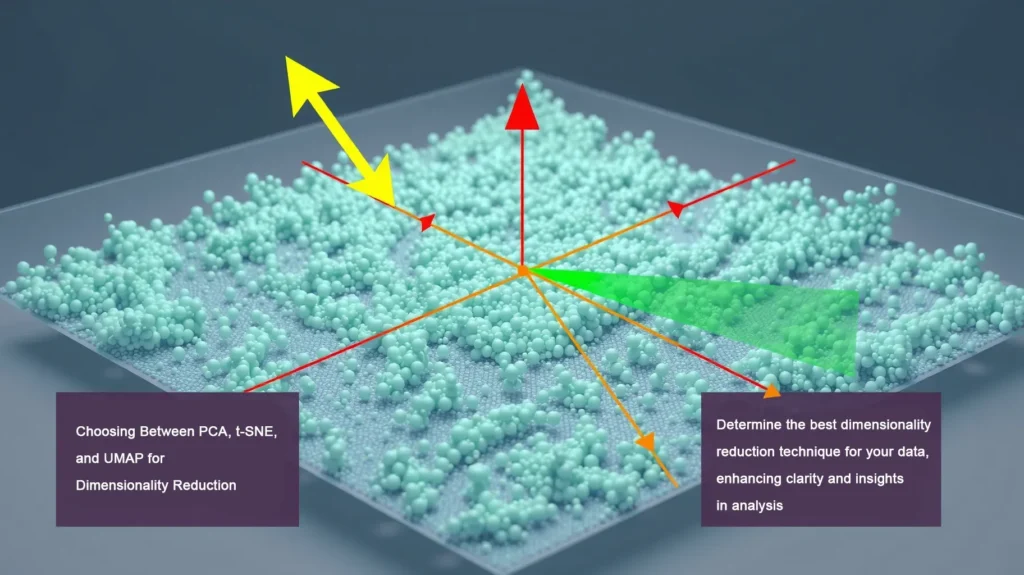
The Complexity of Human Emotions
Human emotions are anything but simple. They’re layered, complex, and often contradictory. People can feel happy and sad at the same time, or be angry for reasons they can’t explain.
This makes it tricky for AI to interpret. AI algorithms, even the most advanced generative models, rely on patterns and data—they excel at numbers, but human emotions often defy neat categorization.
Generative AI, in its current form, analyzes words, facial expressions, or tone to predict emotions. But it doesn’t genuinely feel anything. The challenge lies in the nuance. How can an AI distinguish between sarcasm and sincerity, or frustration and playfulness? These subtleties can be hard enough for humans to spot, let alone for AI.
Emotional Detection: Where AI Shines
AI may not “feel” emotions, but it has become increasingly adept at detecting them. Natural language processing (NLP) tools, for example, analyze sentiment in text or speech. These systems are widely used in customer service, where companies analyze feedback for emotions like frustration or satisfaction. A chatbot trained in sentiment analysis can detect when a customer is upset and offer more tailored responses.
Voice recognition systems also add a layer of emotional awareness. By picking up on intonation and vocal cues, AI can sense if someone is angry, stressed, or pleased. This detection ability, while impressive, is far from actual emotional understanding. AI recognizes the signals of emotion but still lacks the experience to fully grasp them.
Can AI Develop True Emotional Intelligence?
Emotional intelligence, for humans, goes beyond recognizing feelings—it’s about responding in ways that feel appropriate and supportive. For AI to achieve emotional intelligence, it would need to adapt to ever-changing emotional states and provide responses that genuinely resonate. But how could AI, which doesn’t experience emotions, offer empathy?
Some empathic AI chatbots like Replika simulate emotional responses by generating comforting or supportive statements. These systems are evolving, but the empathy is still programmed, not felt. AI can imitate emotional reactions, but it can’t replace the depth of a human connection. Emotional intelligence in machines may remain more performative than genuine, at least for now.

Cultural and Contextual Barriers in Understanding Emotions
Emotions aren’t just influenced by biology; they are shaped by culture and experience. How people express happiness, anger, or grief varies greatly across different societies. This raises the question: can AI be trained to understand cultural nuances in emotional expression?
For example, an AI trained primarily on Western data might misinterpret emotional cues from individuals in other cultures. A warm gesture in one culture might be seen as overstepping boundaries in another. The same goes for context. An angry tone in a casual conversation doesn’t carry the same weight as anger expressed in a professional setting. Teaching AI to adapt to both cultural and contextual shifts is an ongoing challenge for developers.
The Future of Sentiment-Based AI Systems
As AI becomes more skilled in reading emotions, we see its integration into customer service and therapy platforms. Sentiment-based AI systems aim to respond to emotional cues in a more empathetic manner, providing comfort or solutions based on the user’s needs. Chatbots like Woebot even offer cognitive behavioral therapy (CBT), helping users work through anxiety and stress by responding to emotional triggers.
While these systems are groundbreaking, they still fall short of human-level emotional engagement. Users often report that AI interactions feel mechanical, lacking the natural flow and intuitive empathy found in human exchanges. AI may be able to read emotions, but responding with genuine empathy is a different ballgame. For now, AI systems offer support, but they don’t yet provide the emotional richness a human can.
The Complexity of Human Emotions
Human emotions are layered, nuanced, and often contradictory. People can feel joy and sadness simultaneously or even express emotions they don’t fully understand themselves. This makes emotional intelligence difficult to program into machines. Generative AI, for instance, is designed to analyze data and recognize patterns, but emotions aren’t as neatly organized.
Unlike traditional data points, emotions vary wildly between individuals. What one person finds humorous, another may take offense to. Teaching an AI to distinguish between sarcasm, frustration, and sincerity is challenging because it requires understanding context—something humans do instinctively, but AI struggles to achieve.
Emotional Detection: Where AI Shines
AI may not “feel” emotions, but it has become increasingly adept at detecting them. Natural language processing (NLP) tools, for example, analyze sentiment in text or speech. These systems are widely used in customer service, where companies analyze feedback for emotions like frustration or satisfaction. A chatbot trained in sentiment analysis can detect when a customer is upset and offer more tailored responses.
Voice recognition systems also add a layer of emotional awareness. By picking up on intonation and vocal cues, AI can sense if someone is angry, stressed, or pleased. This detection ability, while impressive, is far from actual emotional understanding. AI recognizes the signals of emotion but still lacks the experience to fully grasp them.
Can AI Develop True Emotional Intelligence?
Emotional intelligence, for humans, goes beyond recognizing feelings—it’s about responding in ways that feel appropriate and supportive. For AI to achieve emotional intelligence, it would need to adapt to ever-changing emotional states and provide responses that genuinely resonate. But how could AI, which doesn’t experience emotions, offer empathy?
Some empathic AI chatbots like Replika simulate emotional responses by generating comforting or supportive statements. These systems are evolving, but the empathy is still programmed, not felt. AI can imitate emotional reactions, but it can’t replace the depth of a human connection. Emotional intelligence in machines may remain more performative than genuine, at least for now.
Cultural and Contextual Barriers in Understanding Emotions
Emotions aren’t just influenced by biology; they are shaped by culture and experience. How people express happiness, anger, or grief varies greatly across different societies. This raises the question: can AI be trained to understand cultural nuances in emotional expression?
For example, an AI trained primarily on Western data might misinterpret emotional cues from individuals in other cultures. A warm gesture in one culture might be seen as overstepping boundaries in another. The same goes for context. An angry tone in a casual conversation doesn’t carry the same weight as anger expressed in a professional setting. Teaching AI to adapt to both cultural and contextual shifts is an ongoing challenge for developers.
The Future of Sentiment-Based AI Systems
As AI becomes more skilled in reading emotions, we see its integration into customer service and therapy platforms. Sentiment-based AI systems aim to respond to emotional cues in a more empathetic manner, providing comfort or solutions based on the user’s needs. Chatbots like Woebot even offer cognitive behavioral therapy (CBT), helping users work through anxiety and stress by responding to emotional triggers.
While these systems are groundbreaking, they still fall short of human-level emotional engagement. Users often report that AI interactions feel mechanical, lacking the natural flow and intuitive empathy found in human exchanges. AI may be able to read emotions, but responding with genuine empathy is a different ballgame. For now, AI systems offer support, but they don’t yet provide the emotional richness a human can.
FAQs
Can AI truly understand human emotions?
At present, AI can detect and analyze emotions through sentiment analysis and natural language processing (NLP), but it lacks the ability to truly understand emotions the way humans do. While it can recognize patterns and predict emotional cues, AI does not experience emotions and struggles with subtle nuances like sarcasm or mixed feelings.
How does AI detect emotions?
AI detects emotions primarily through text analysis, tone recognition, and facial expression detection. Using these methods, it can infer whether someone is happy, sad, frustrated, or calm based on the words they use, their vocal intonation, or physical cues like smiling or frowning.
Can AI become emotionally intelligent?
AI can mimic emotional intelligence by providing responses that appear empathetic or supportive, but it doesn’t feel or understand emotions. Some empathic chatbots, like Replika, simulate caring responses, but these are programmed rather than genuine. AI can recognize emotions but not respond with true empathy.
Can AI adapt to different cultural expressions of emotions?
Cultural and contextual differences in emotional expression are challenging for AI. Emotions like joy or grief vary across cultures, and AI systems trained predominantly on Western data might misinterpret signals from other cultures. Teaching AI to adapt to cultural nuances remains an ongoing challenge in the field.
What is the future of AI in sentiment analysis?
AI’s future in sentiment analysis is promising, with advancements in customer service, mental health apps, and even therapy platforms. AI systems are becoming more skilled at reading emotions and responding appropriately, but there’s still a gap between AI’s capabilities and the authentic emotional connections humans offer.
Can AI provide emotional support in therapy?
AI tools like Woebot use cognitive behavioral therapy (CBT) to help users manage stress, anxiety, and negative thinking patterns. While these tools are effective in offering structured support, they lack the deep empathy and emotional understanding that human therapists provide. AI in therapy serves more as a supplement than a replacement.
Should AI be programmed to understand emotions?
There’s ongoing debate around whether AI should be designed to fully understand or mimic emotions. Some argue that emotionally intelligent AI could improve customer service, healthcare, and support systems, while others worry that AI might use emotional manipulation if it becomes too advanced at mimicking human empathy.
How does AI distinguish between different emotions like anger or sadness?
AI uses natural language processing (NLP), facial recognition, and tone analysis to distinguish between various emotions. For instance, sentiment analysis can categorize words or phrases that are typically associated with anger or sadness. In voice recognition, AI identifies emotional cues such as changes in pitch or volume. However, subtle differences between similar emotions, like frustration and disappointment, are still difficult for AI to accurately interpret.
Can AI recognize sarcasm or humor?
AI has difficulty recognizing sarcasm, humor, and other forms of emotional nuance. While it can process the words used, it struggles with the context and tone that often signal sarcasm or jokes in human conversation. Developers are working to improve AI’s ability to detect these subtleties, but it remains a significant challenge since sarcasm relies heavily on context and shared understanding—something AI lacks.
Will AI ever feel emotions like humans do?
AI, in its current and foreseeable forms, cannot feel emotions as humans do. It can simulate emotional responses by learning from large datasets, but it does not experience feelings like happiness, fear, or anger. Emotions are a product of human consciousness, shaped by personal experiences, biology, and social interactions—factors that AI does not possess.
What role will AI play in future emotional intelligence tools?
AI will likely continue to improve in tasks that involve emotional recognition and response generation. Future AI systems could be more integrated into fields like mental health, education, and customer service, helping people manage stress, improve emotional well-being, or receive timely support. However, AI will still function as a supplementary tool rather than a replacement for genuine human interaction, which remains essential in emotionally sensitive situations.
Can AI improve its understanding of human emotions over time?
AI can improve its emotional detection skills as it is trained on larger and more diverse datasets. With advances in machine learning and deep learning, AI systems can become better at understanding context, cultural differences, and even non-verbal cues. However, even with improvements, AI’s understanding of emotions will likely remain more superficial than a human’s deep emotional awareness.
Are there ethical concerns with AI understanding emotions?
Yes, there are several ethical concerns around AI and emotions. If AI becomes too adept at recognizing and responding to human emotions, it could be used to manipulate behavior—for example, by influencing consumers’ decisions or exploiting emotional vulnerabilities in sensitive areas like mental health. Ensuring transparency, ethical programming, and user consent will be critical as AI’s emotional capabilities evolve.
How does AI handle conflicting emotions?
AI struggles with interpreting conflicting emotions—like feeling excited and nervous at the same time—because its algorithms are designed to categorize emotions into distinct categories. Human emotions are often complex and multi-layered, which means that while AI can detect multiple emotional signals, it cannot truly understand or interpret how these emotions coexist or influence each other in real life.
Can AI learn from emotional experiences like humans?
AI cannot learn from personal emotional experiences because it lacks consciousness and self-awareness. It can, however, be trained on vast datasets that reflect how humans react to various emotional experiences. While this enables AI to mimic emotional responses, it does not provide AI with the ability to understand or learn from emotions in the way humans do through lived experiences and self-reflection.
What is the difference between AI detecting emotions and understanding them?
Detecting emotions involves identifying emotional cues—like tone of voice, facial expressions, or word choice—while understanding emotions requires deeper insight into the context, motivations, and emotional states behind those cues. AI is adept at detection through data analysis, but true understanding is rooted in human experience, which AI lacks. It can recognize when someone is angry, but it can’t fully grasp the reasons why or how to respond in a deeply empathetic way.
Resources for Learning More About AI and Emotional Understanding
- The Emotional AI Lab
The Emotional AI Lab is an interdisciplinary research group focusing on the use of AI in understanding emotions. They explore how emotional AI is being developed and deployed in various sectors, offering insights into both the technology and its ethical implications.





